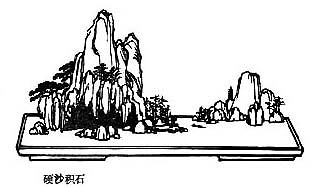Sun Zi 
 – The Art of War
– The Art of War
Chinese strategy explained : know yourself and the ennemy, use deception, spies, and "win with ease". Tr. Giles (en, annotated) and Amiot (fr).
Weak Points And Strong
Chang Yu attempts to explain the sequence of chapters as follows: "Chapter IV, on Tactical Dispositions, treated of the offensive and the defensive; chapter V, on Energy, dealt with direct and indirect methods. The good general acquaints himself first with the theory of attack and defense, and then turns his attention to direct and indirect methods. He studies the art of varying and combining these two methods before proceeding to the subject of weak and strong points. For the use of direct or indirect methods arises out of attack and defense, and the perception of weak and strong points depends again on the above methods. Hence the present chapter comes immediately after the chapter on Energy."
Sunzi VI. 11.
Though according to my estimate the soldiers of Yueh exceed our own in number, that shall advantage them nothing in the matter of victory. I say then that victory can be achieved.1
Giles VI.21.
Ne cherchez pas à avoir une armée trop nombreuse, la trop grande quantité de monde est souvent plus nuisible qu'elle n'est utile. Une petite armée bien disciplinée est invincible sous un bon général. À quoi servaient au roi d'Yue les belles et nombreuses cohortes qu'il avait sur pied, lorsqu'il était en guerre contre le roi de Ou ? Celui-ci, avec peu de troupes, avec une poignée de monde, le vainquit, le dompta, et ne lui laissa, de tous ses États, qu'un souvenir amer, et la honte éternelle de les avoir si mal gouvernés.
Amiot

The Art of War – Sun Zi VI. 11. – Chinese off/on – Français/English
Alias Sun Tzu, Sun Wu, Sun Tse, Sunzi Bingfa, Souen Tseu, Souen Wou, 孫武.
The Book of Odes, The Analects, Great Learning, Doctrine of the Mean, Three-characters book, The Book of Changes, The Way and its Power, 300 Tang Poems, The Art of War, Thirty-Six Strategies
Welcome, help, notes, introduction, table.
Index – Contact – Top
